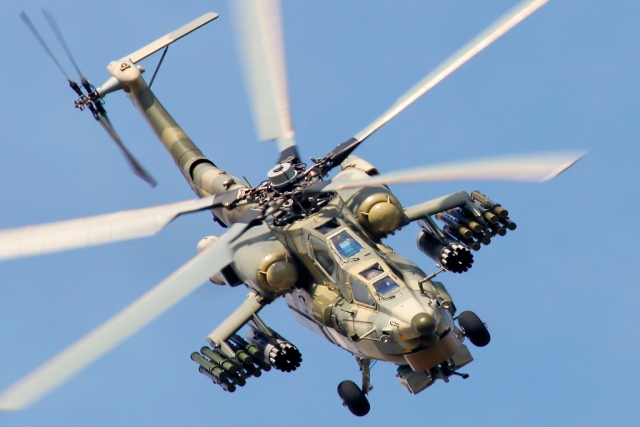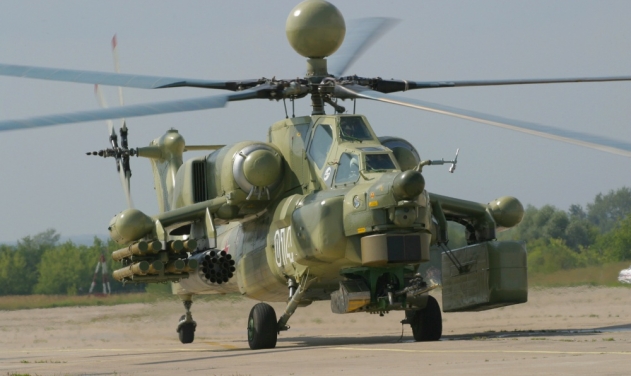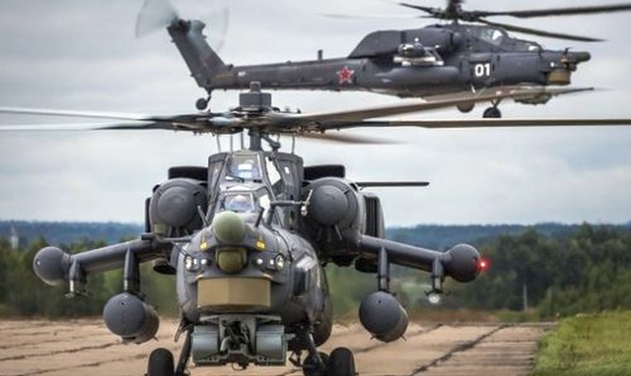Russia to Conduct High-Altitude Tests of its Deadly Mi-28NM Gunship

The Russian Ministry of Defense will begin high-altitude tests of Mi-28NM and Mi-26T2V helicopters this month.
Three helicopters will take part in the tests to be held at Elbrus region: first prototype of Mi-28NM OP-1, Mi-28NM with the tail number 71, and the Mi-26T2V with the tail number 157. The first Mi-28NM has already undergone testing in mountainous terrain and in Syria, but not in winter highlands, Izvestia reported citing defense industry sources today.
Russia unveiled upgraded Mi-28NM ‘Havoc’ gunship which is a modernized version of Mi-28N ‘Night Hunter’ in June 2019. It was developed based on operational experience in Syria. An advanced VK-2500P engine developed for this aircraft passed tests in October.

Serial production of the helicopter began this year. The military is expected to acquire nearly 100 Mi-28NM rotorcraft by 2027.
Mi-28NM Havoc Gunship
The Mi-28NM designed to search for and destroy low-speed air targets, tanks, armored and non-armored vehicles as well as enemy manpower in daytime and at night, in all weather conditions. The aircraft’s on-board radar equipment comprises an innovative helmet-mounted imaging and pointing system. It is equipped with an N025 radar station, which makes it possible to carry out round watch. The upgrade also has a new Electronic Warfare (EW) system. The Mi-28N can develop a maximum speed of 300 km/h and its take-off weight exceeds 11 tonnes. The gunship is armed with a 30mm gun and can carry both missiles and rockets.
The helicopter has a modified fuselage and modernized engines; a radio-electronic onboard system and a target sight system; an auxiliary power plant and equipment for communication with drones.
Mi-26T2V Helicopter
The modernized Mi-26T2V helicopter is a heavy-lift wide-body transport helicopter which can carry up to 20 tonnes of cargo. The machine has the modern NPK90-2V integrated avionics, which ensures piloting during the day and at night, enabling the helicopter to fly the route in an automatic mode, come to a pre-set point, perform approach and final approach maneuvers, and return to the main or alternate aerodrome.
The onboard defensive aids of Mi-26T2V ensure protection of the helicopter from being hit by air defense missile systems.












